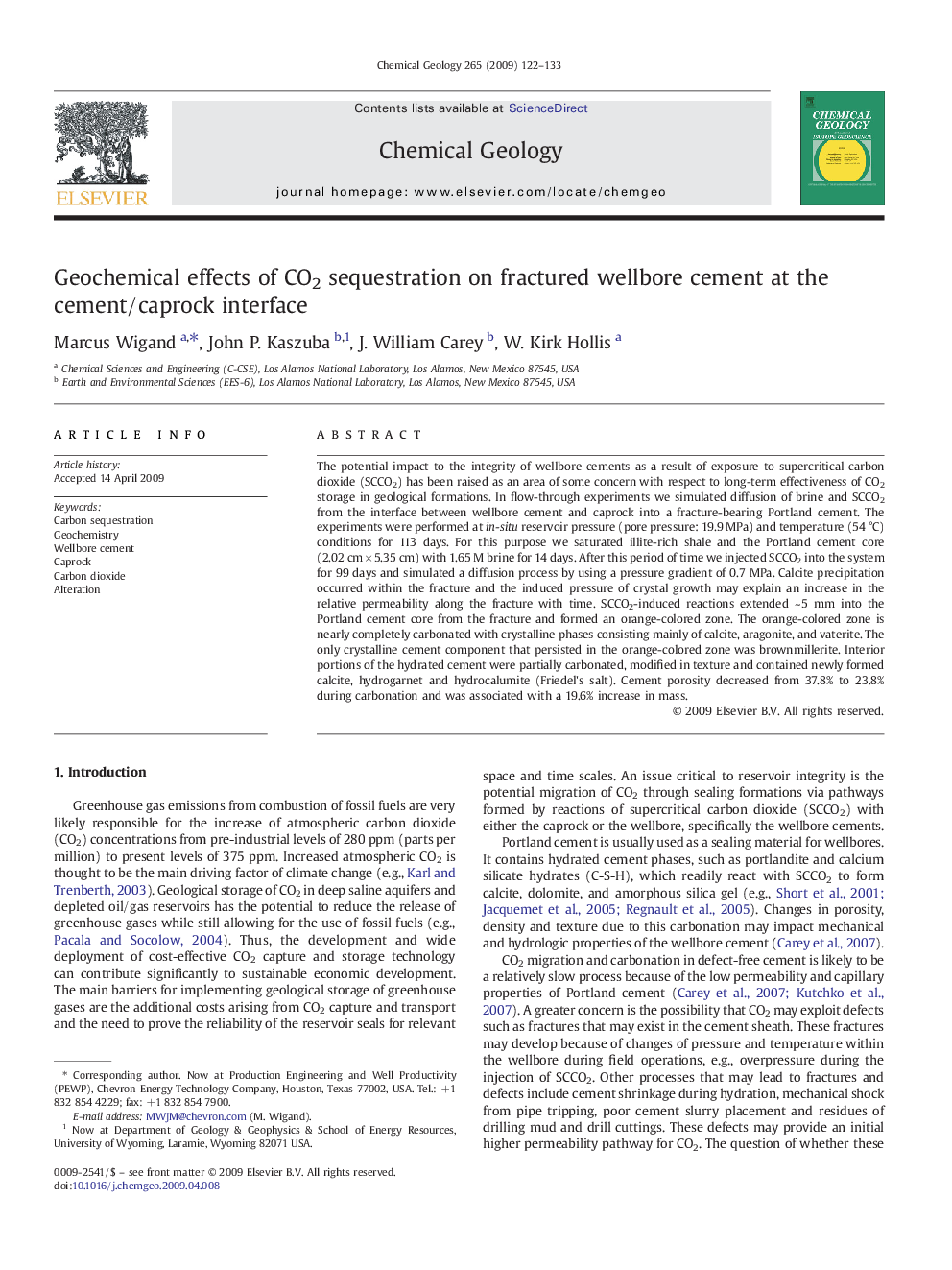| Article ID | Journal | Published Year | Pages | File Type |
|---|---|---|---|---|
| 4700152 | Chemical Geology | 2009 | 12 Pages |
The potential impact to the integrity of wellbore cements as a result of exposure to supercritical carbon dioxide (SCCO2) has been raised as an area of some concern with respect to long-term effectiveness of CO2 storage in geological formations. In flow-through experiments we simulated diffusion of brine and SCCO2 from the interface between wellbore cement and caprock into a fracture-bearing Portland cement. The experiments were performed at in-situ reservoir pressure (pore pressure: 19.9 MPa) and temperature (54 °C) conditions for 113 days. For this purpose we saturated illite-rich shale and the Portland cement core (2.02 cm × 5.35 cm) with 1.65 M brine for 14 days. After this period of time we injected SCCO2 into the system for 99 days and simulated a diffusion process by using a pressure gradient of 0.7 MPa. Calcite precipitation occurred within the fracture and the induced pressure of crystal growth may explain an increase in the relative permeability along the fracture with time. SCCO2-induced reactions extended ~ 5 mm into the Portland cement core from the fracture and formed an orange-colored zone. The orange-colored zone is nearly completely carbonated with crystalline phases consisting mainly of calcite, aragonite, and vaterite. The only crystalline cement component that persisted in the orange-colored zone was brownmillerite. Interior portions of the hydrated cement were partially carbonated, modified in texture and contained newly formed calcite, hydrogarnet and hydrocalumite (Friedel's salt). Cement porosity decreased from 37.8% to 23.8% during carbonation and was associated with a 19.6% increase in mass.
